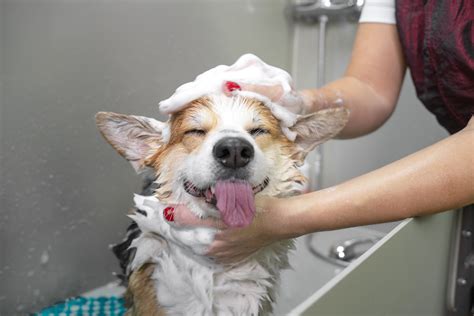Allergies VS Pets: The Dual Dilemma
Allergies and pets are a common combination that can present a dilemma for pet owners and allergy sufferers alike. On the one hand, the companionship and affection of a furry friend can be invaluable. On the other hand, the allergens they produce can trigger uncomfortable and even dangerous symptoms.

According to the American Academy of Allergy, Asthma & Immunology (AAAAI), over 10% of Americans suffer from pet allergies. These allergies are typically caused by exposure to pet dander, which is a mixture of skin flakes, saliva, and hair shed by animals. Dander can become airborne and easily inhaled, triggering allergic reactions in sensitized individuals.
The most common symptoms of pet allergies include:
- Sneezing
- Runny nose
- Itchy eyes
- Nasal congestion
- Wheezing
- Difficulty breathing
Essential Elements of Pet Cleaning and Hygiene
While it’s not always possible to eliminate all sources of pet allergens, there are effective steps you can take to minimize their presence and reduce allergy symptoms. Here are some essential elements of pet cleaning and hygiene:
1. Regular Bathing and Grooming
Bathing your pet regularly with a gentle shampoo specifically designed for animals can help remove allergens from their skin and fur. Brushing your pet frequently can also help remove loose hair and dander before it becomes airborne.
2. Vacuuming and Dusting
Vacuuming regularly with a HEPA (High-Efficiency Particulate Air) filter can effectively remove pet dander from carpets, furniture, and other surfaces. Dusting surfaces, especially those frequented by your pet, can also help reduce allergen accumulation.
3. Pet-Friendly Air Purification
Using an air purifier with a HEPA filter can help remove airborne pet allergens from the air. This can significantly improve indoor air quality and reduce allergy symptoms.
4. Designated Pet Spaces
Confining your pet to certain areas of your home, such as a crate or a specific room, can help limit the spread of allergens throughout the house.
5. Hypoallergenic Breeds
If you’re considering getting a pet but are concerned about allergies, consider adopting a hypoallergenic breed. Hypoallergenic breeds typically shed less and produce lower levels of dander, making them better tolerated by allergy sufferers.
Tips for Allergy Sufferers
If you have pet allergies, there are several things you can do to manage your symptoms:
- Limit your exposure: Avoid spending extended periods of time in close proximity to your pet.
- Use allergy medication: Over-the-counter or prescription allergy medications can effectively reduce symptoms such as sneezing and congestion.
- Consult a healthcare professional: If your allergy symptoms are severe or persistent, consult an allergist or immunologist for professional guidance and treatment options.
Pet-Friendly Solutions for Allergy Concerns
Recent advancements in pet care products and technology have made it easier than ever to enjoy the companionship of a pet without compromising your health. Here are a few innovative solutions:
- Allergen-reducing wipes: These wipes are specially formulated to remove allergens from your pet’s skin and fur.
- Anti-dander sprays: These sprays contain ingredients that neutralize pet dander and minimize its allergenic effects.
- Grooming gloves: These gloves are designed to collect and remove loose hair and dander while brushing your pet.
Conclusion
Managing pet allergies can be challenging, but by implementing a comprehensive cleaning and hygiene regimen, you can minimize allergen exposure and enjoy the benefits of pet ownership. Regular bathing and grooming, vacuuming and dusting, air purification, designated pet spaces, and innovative pet care solutions can all contribute to a healthier and more comfortable living environment for both you and your furry friend.





















